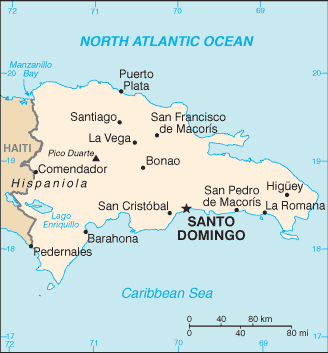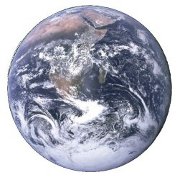
Custom Search
Dominican Republic

5 Facts You Might Not Know
1
The world's biggest open-pit gold mine is located here, and together with silver mining constitutes the nation's biggest economic factor. However, the fertile soil found on much of the island helps crops to thrive, such as sugarcane, coffee, tobacco, bananas, rice and many other food commodities. 2
Discovered by Christopher Columbus in 1492, the island of Hispaniola was originally home to an unknown race of Indians known as Tainos. These indigenous people had lived here since 800 A.D., but were wiped out as a race in a matter of only 50 years. This was due to violence from the Spaniards who came in conquest and to claim the island as their own. 3
Almost 800 miles of coastline circles the island, with much of it composed of picture-perfect tropical beaches. Even though the white, sandy shoreline with every shade of crystal-clear, blue water beckon tourists to visit, most vacationers head first for the more well-known islands in the Caribbean. 4
By air, the Dominican Republic is only three hours away from New York, and just under two hours away from Miami. Santo Domingo, which is the oldest city in the New World - otherwise known as the Americas, has two international airports. 5
The population of the Dominican Republic is very near ten million people, and by area it is slightly more than double the size of New Hampshire, or 18,000 square miles. In contrast, New York city has a population of almost nine million people, with an area of 305 square miles.The capital of Dominican Republic is Santo Domingo. The currency of Dominican Republic is the Dominican Peso(DOP) Flag of Dominican Republic
Dominican Republic belongs to the North American continent
More countries starting with D
Airports in Dominican Republic
Aeropuerto Internacional Punta Cana, Aeropuerto Internacional La Unión, Aeropuerto Internacional de Las Américas, La Romana, Cibao International, Barahona, Arroyp Barril Internaional Airport, and Samaná El Catey International AirportLeaders of Dominican Republic
The Country dialling code of Dominican Republic is +1 849, and the TLD (Top-level domain) of Dominican Republic is .do
Map of Dominican Republic

Population
9,365,818Languages spoken in Dominican Republic
SpanishAnimals native to Dominican Republic / which animals live in Dominican Republic?
Click here for all Animals in Dominican RepublicAirlines in Dominican Republic
Click here for all Airlines in Dominican RepublicCoordinates (in Latitude & Longitude) of Dominican Republic
19 00 N, 70 40 WKilometers of coastline
1,288 kilometersSquare kilometers of land
48,380 square kilometersSquare kilometers of water
350 square kilometersBirth rate
22.91 / 1000 populationDeath rate
5.32 / 1000 populationIrrigated land
2,750 sq km Information about Dominican Republic is brought to you by "List of countries of the world", your first stop in discovering all countries of the world.
Information about Dominican Republic is brought to you by "List of countries of the world", your first stop in discovering all countries of the world.Besides demographic information, geological information about Dominican Republic, also the flag of Dominican Republic and a map is displayed. View also countries of the world ordered by:
- List of TLD's
- Country dialling codes
- Population
- Kilometers of coastline
- Square kilometers of land
- Square kilometers of water
- Birth rate
- Death rate
- Irrigated land
- Countries starting with A
Privacy policy